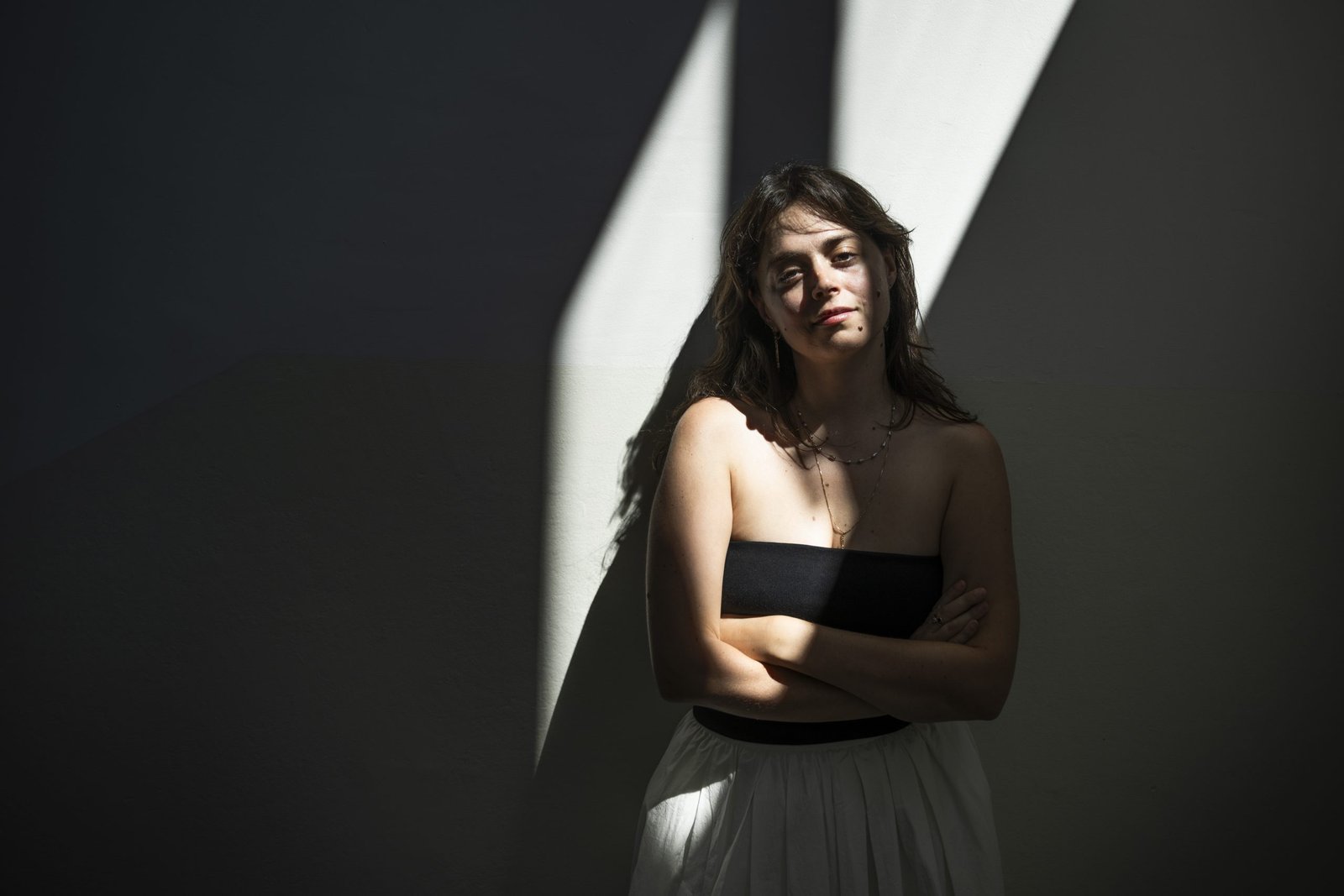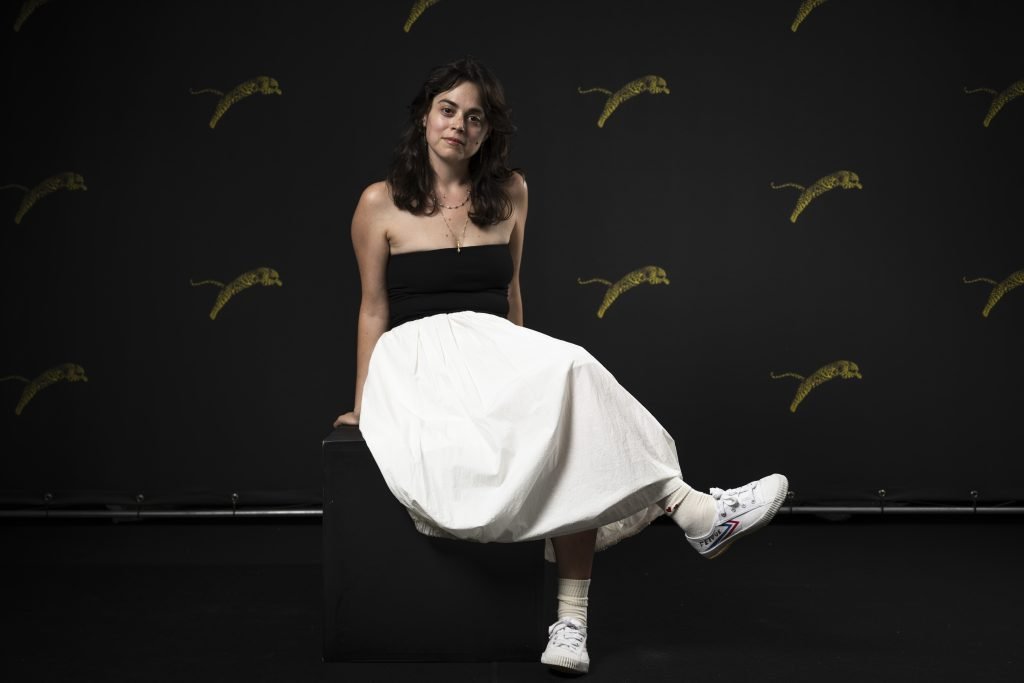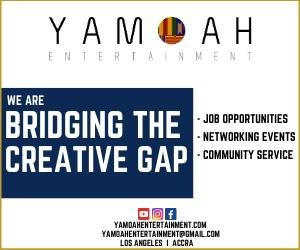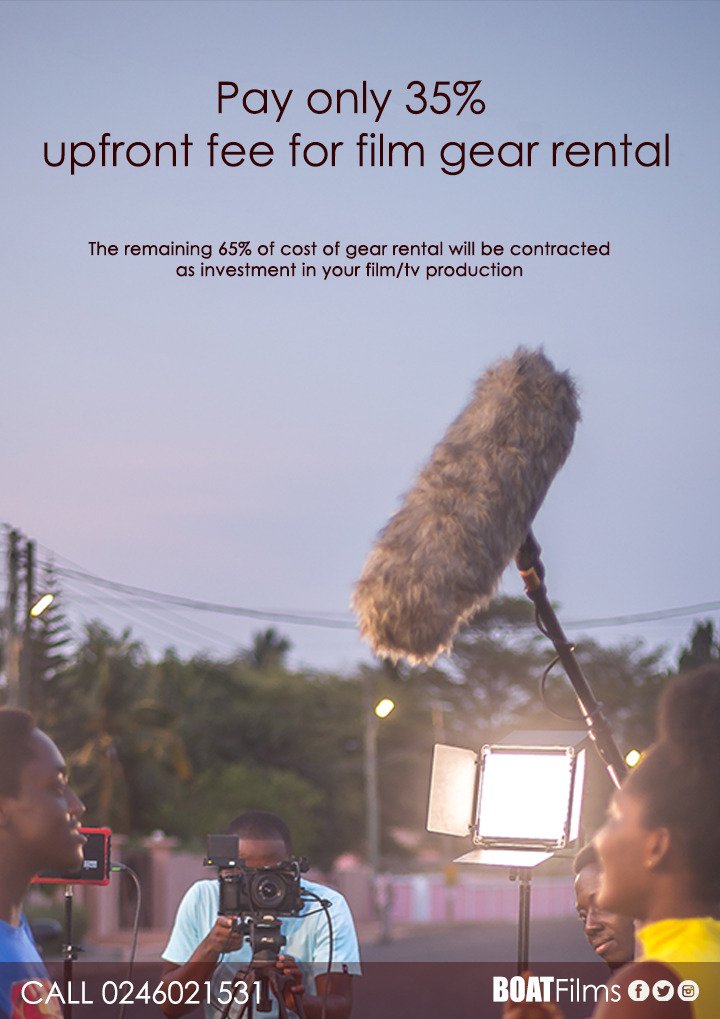Interviews
Alina Orlov on ‘The Cavalry’: Unveiling Power and Oppression Through Art and Film.
Published
7 months agoon

Filmmaker Alina Orlov brings a distinctive voice to the intersection of art and activism, drawing on her fine arts background to create compelling visual narratives. Born in Moscow and raised in Israel, Alina’s life has been shaped by cultural transitions, giving her a unique perspective on the complexities of identity, power, and oppression.
Her debut film, “The Cavalry,” reflects these experiences, offering a powerful exploration of state violence and the symbolic role of animals in the suppression of dissent. Through this film, she challenges us all to confront the often-overlooked stories that lie at the heart of political conflicts. There is no doubt that this film is both a personal expression and a profound political statement.
In this interview with GhMoviefreak.com, Alina throws more light on the significance of her film and how it contributes to the growing conversation.
-
Tell us a bit about yourself, Alina Orlov?
Alina Orlov – I was born in Moscow during the Soviet Union and fled with my family to Israel as a young child, where I was raised. This experience of dual culture and immigration has profoundly shaped my identity and perspective as an artist. I began my artistic journey with a Bachelor of Fine Arts from the Bezalel Academy of Art and Design. After graduating, I participated in several residencies, with the most meaningful one being in Baku, Azerbaijan – where my father is from. In 2018, I pursued a Master of Fine Arts at the School of the Art Institute of Chicago, in the Film, Video, Animation, and New Media department. Today, I reside in the beautiful city of Montreal with my partner, Patrick O’Shea.
-
What has your journey as a filmmaker been like so far for you?
Alina – My journey as a filmmaker has been through fine art, and ‘The Cavalry’ is my debut film. I work across different mediums, including video installations and glass sculptures, which enriches my approach to filmmaking. This dual experience gives me the freedom to choose the most suitable medium for each project, ensuring that I’m not confined to a single form. I value this flexibility as it allows me to craft works that truly express each story’s essence.
-
What inspired you to make this film ‘The Cavalry?’
Alina – ‘The Cavalry’ began to take shape during the 2023 protests against the Israeli government; it was my way of saying goodbye to a place. After living in the US for several years, I returned to Israel to be with my family after COVID. When I attended one of the first demonstrations, I couldn’t help but notice the horses and wondered what their role was in all of this. It made me question why horses have historically been forced into such situations. I started filming extensively, capturing hours of footage from the protests, though most of it didn’t make it into the final film. Horses have long been used in crowd control and protest policing, often symbolizing state power and the suppression of dissent. In the context of Israeli politics, their use during protests, especially against marginalized voices, underscores broader issues of state violence and the militarization of policing.
As police violence escalated, I felt compelled to document the events, with my focus constantly on the horses. With the help of my journalist friend, Shaul Greenfeld, I gained access to one of the police cavalry units. There, I observed and documented the events on my own, capturing the essence of what these horses represent in such contexts. At the beginning of this project, I was focused on highlighting the inhumanity and lack of control within the Israeli government. I aimed to create a film that depicted this process of oppression through the lens of the environment and an animal.
-
Can you tell us a bit more about the non-linear style you used in the making of this film?
Alina – The non-linear style in “The Cavalry” mirrors my working process and the nature of the film’s themes. I often moved back and forth between filming and editing, mostly working alone with my partner’s support. This non-linear approach aligns with the film’s exploration of archives and memory, emphasizing that these processes are inherently fragmented and rarely linear.
It reflects the complexity and layered nature of both the subject matter and the personal experience of creating the film. This way of working reflected the chaotic nature of the subject matter and the process of piecing together the film.
-
How did your background in fine arts influence the visual style and tone of “The Cavalry”?
Alina – My background in fine arts influenced The Cavalry in several ways, although the film might look different from my previous work. The core motivations behind creating the film are consistent with those in my other projects.
The process of working on The Cavalry—from conceptualizing to filming and editing—mirrors the methods I use in my visual art practice, blending different elements to convey a profound message.
-
How do you think the film’s semi-documentary approach impacts the viewer’s understanding of the Israeli-Palestinian conflict?
Alina – The Cavalry addresses the systematic use of force and conditioning to oppress others, while symbolically presented through the treatment of animals. Whether the viewer interprets the treatment as abusive, caring, or normal is intentionally left up to the viewer – I intentionally wanted the film to question our own interpretations of how these animals are being treated – reflecting somewhat the fractured and polarizing interpretation of crises happening in real life, where some people believe one thing and the other believe something completely different. By observing the police officers’ commitment to breaking down these horses, I hope viewers will recognize that the ‘care’ these men have for the horses is based on a utilitarian and militaristic need. I believe it is also far greater than the care they have for the people they look down upon from the horses’ backs, leaving viewers to imagine (or reflect on evidence of) the violence they commit/have committed when in service.
As an artist and filmmaker, I am driven by the belief that films and art possess a unique power to expose injustice, reveal systems of oppression, and shine a light on issues from perspectives otherwise unknown- while also not acting monolithic and in a continuous way deconstructing or constantly questioning small pieces of larger contexts and narratives.
The silencing of public dissent and systems of violent oppression are heartbreaking and crushing, and in ‘The Cavalry’ I show one small story of the horses that are caught in the middle.
-
What was the significance of focusing on the young horse, “7,” in the narrative?
Alina – The focus on the young horse, ‘7,’ serves as a poignant metaphor for how living beings, both human and animal, are conditioned to serve in roles that perpetuate systems of control and oppression. ‘7’ had just arrived from the Netherlands, a foreign land, and was thrust into an environment where his purpose was to be shaped entirely by the needs of the state. The fact that he hadn’t been named yet adds to the sense of his identity being molded by external forces. His eventual naming symbolizes the completion of his training, marking the point at which he is no longer just a young horse but a tool of the state, ready to be deployed in the suppression of dissent.
More than anything, there was something deeply emotional for me in seeing this young horse and knowing that soon he would be a tool for control. At that moment, he wasn’t fully conditioned yet, but soon he would be. That realization was important and painful, as it underscored the loss of innocence and the transformation into a mechanism of power.
-
Were there any specific challenges you faced in the making of this film and how did you overcome them?
Alina – Yes, there were several challenges in making The Cavalry. One significant challenge was handling the sensitive and politically charged subject matter. I wanted to portray the issues surrounding the use of horses in crowd control and the broader themes of state violence and oppression with authenticity and depth, while also grappling with the larger picture of tens of thousands of Palenstinians being killed, and the hostage crisis. For me, this film was an attempt to say goodbye to a place, and now, in light of events after October 7th, it feels even more painful.
-
What went into the selection of archival footage for the making of this film? And did that pose any challenges for you?
Alina – In creating The Cavalry, I drew heavily from archival footage from the British Mandate period, particularly focusing on the story of Issak Shwily, who served as a policeman and was later appointed by the British as the first Jewish commander of a police station during the Mandate era. This material was crucial for understanding the historical context. I extensively explored footage available on the B’Tselem website, among other sources. Initially, my aim was to grasp the historical background of this specific issue, but the project expanded beyond that.
One of the main challenges was finding a way to transform this historical footage into something more than just a textbook reference. I wanted the film to evolve from raw historical material into a compelling narrative that resonates on an emotional and thematic level.
-
How do you feel the film has been received so far, given its subtle but politically charged subject matter?
Alina – The film’s reception has been a bit of a mixed bag. Overall, it’s been well received, but the politically charged subject matter makes things complicated. Screening at Locarno was tough, especially with the film focusing on a part of Israel. I knew some people might have had strong reactions due to my nationality, and indeed, a few left before the film even started as a form of protest. I get why—I might have felt the same if they were in their shoes. Still, I think it’s really important to show work that critiques government actions, even if it’s challenging.
-
For anyone who watches this film, what is the one message or theme you won’t want them to miss?
Alina – I hope viewers grasp how the film exposes oppression through the treatment of animals and the environment. “The Cavalry” highlights the symbolic use of force to intimidate and control civilians. By observing the police officer’s actions in training these horses, I aim for viewers to recognize that the ‘care’ shown to the horses contrasts sharply with the disregard for the people they control. This contrast should provoke reflection on the broader violence and dehumanization inherent in such systems.
-
If given the chance, are there any aspects of “The Cavalry” that you would approach differently?
Alina – No, I believe “The Cavalry” is complete for me. Any new ideas or approaches will be explored in future projects. For this project, I feel it stands as a whole.
-
Lastly, what advice would you give to other filmmakers who want to tackle sensitive or politically complex subjects?
Alina – My advice would be to stay true to what you believe in and keep creating. It’s crucial to let voices that challenge the status quo be heard. Don’t wait for the perfect budget or perfect conditions—just make your art and culture. Even if you’re working without funding, like I did, your work is vital. It’s what keeps us connected to our humanity and conscience.
And one last thing, on a personal note, I call for a ceasefire now, nothing will bring back the dead. The only way we can possibly honor their lives is to fight with everything we have to ensure that not another life is lost. I stand with the hostage families and hundreds of thousands taking to the streets in Israel demanding that Netanyahu agree to a ceasefire. A ceasefire would have saved the 47 Palestinians killed in airstrikes today and the over 40,000 Palestinian lives lost since October. A ceasefire would have saved the six hostages who were killed last week.
As Alina Orlov reflects on “The Cavalry,” it becomes clear that her work is more than just a film; it is a call to action, a plea for humanity in the face of systemic violence. Her advice to fellow filmmakers is “stay true to what you believe in and keep creating”. This advice resonates with the urgency of her message.
In a world fraught with conflict, Alina has chosen to use art to challenge us all to see beyond the surface. She uses her voice to question the forces that shape our lives and to fight for a future where voices of dissent are not just heard but heeded.
And while she advocates for a ceasefire, Alina reminds us that the power of film lies not only in its ability to document but also in its ability to inspire change.
Photos Courtesy of Alexander Crinari
Second on my list of addictions is Movies.. the only thing I could possibly love more is my Dearest Waakye lol. Nothing else does a better job of reminding me that ANYTHING is possible with the right amount of effort. I have great eye for details and flaws in scripts. Shallow scripts bore me. I am an avid reader. Your everyday Mr Nice guy. Always the last to speak in a room full of smart people. Half Human, half Martian but full MOVIE FREAK.

















